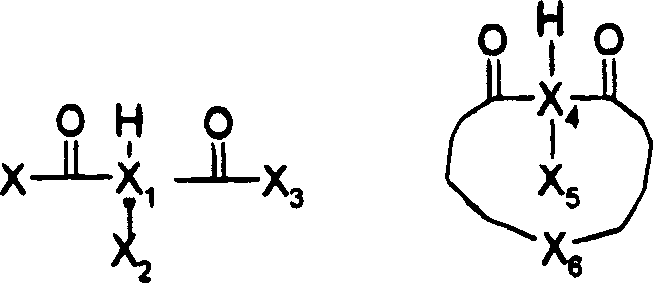Encapsulated active material with reduced formaldehyde potential
An active material and formaldehyde technology, applied in the formulation of perfume preparations, detergent compounding agents, liquid soap, etc., can solve the problems of undisclosed free formaldehyde reducers, etc.
- Summary
- Abstract
- Description
- Claims
- Application Information
AI Technical Summary
Problems solved by technology
Method used
Image
Examples
Embodiment approach
[0125] According to one embodiment of the invention, the scavenger moieties may be attached to the surface of a solid support. A solid carrier is defined as a substance that is insoluble in the capsule slurry, the product base containing the capsule slurry and the product base used. The solid carrier scavenger can be added to the capsule slurry or commercial products containing capsules to reduce formaldehyde levels. The formaldehyde becomes permanently bound to the solid support, resulting in an inert and benign adduct.
[0126] Suitable solid supports can be polymeric or inorganic in nature. Examples of polymeric supports are polyolefins such as polyethylene, polystyrene, polyvinyl acetate, polysaccharides such as dextran, polyesters, polyamides, polyurethanes, polyacrylates, and polyureas. These polymers may be linear, branched or crosslinked. The surface of the carrier can be further treated to enable attachment of the scavenger fragments. An example of such a treatmen...
Embodiment
[0253] The following fragrance compositions were prepared for use in the following examples:
[0254] Fragrance ingredients
Embodiment I
[0256] Formaldehyde Levels in Uncleared Capsules
[0257] Into one reactor was charged 34 g of acrylic acid-acrylamide copolymer solution, 18 g of melamine-formaldehyde precondensate, and 293 g of water. This mixture was stirred until a clear solution with an approximate pH of 6.3 was obtained. Acetic acid was added until pH5 was reached. This mixture was then stirred at 23°C for 1 hour at which time a 210g fragrance core consisting of 105g fragrance and 105g Neobee M-5 oil was added and the mixture was subjected to high shear until an average droplet size of 8µm was achieved. The temperature was raised to 80°C over 2 hours to solidify the microcapsules. After 2 hours 40 g of water were added and the mixture was allowed to cool. On cooling a white slurry of pH 5-6 was obtained. ASTM formaldehyde analysis indicated formaldehyde levels in the slurry were 1500-3000 ppm.
PUM
| Property | Measurement | Unit |
|---|---|---|
| molecular weight | aaaaa | aaaaa |
Abstract
Description
Claims
Application Information
 Login to View More
Login to View More - R&D Engineer
- R&D Manager
- IP Professional
- Industry Leading Data Capabilities
- Powerful AI technology
- Patent DNA Extraction
Browse by: Latest US Patents, China's latest patents, Technical Efficacy Thesaurus, Application Domain, Technology Topic, Popular Technical Reports.
© 2024 PatSnap. All rights reserved.Legal|Privacy policy|Modern Slavery Act Transparency Statement|Sitemap|About US| Contact US: help@patsnap.com










